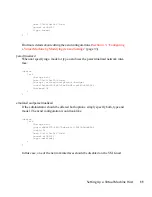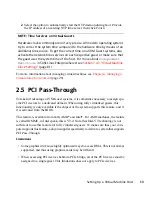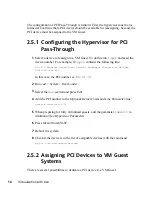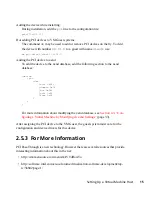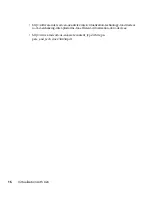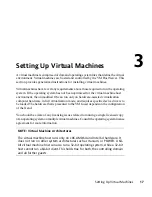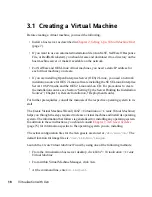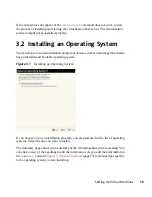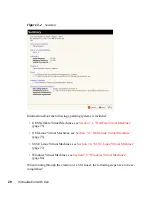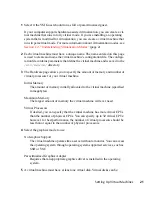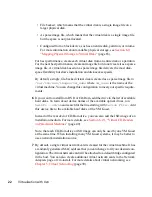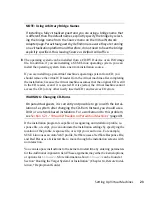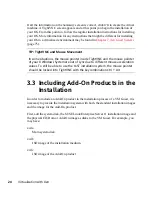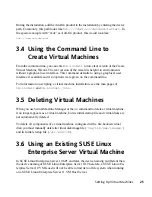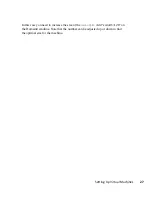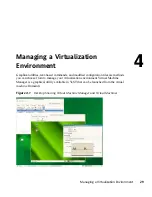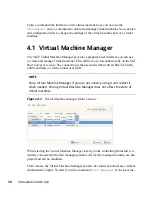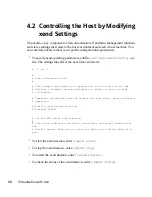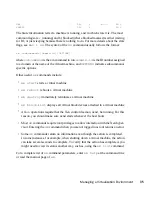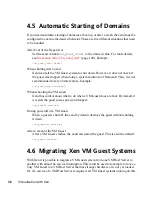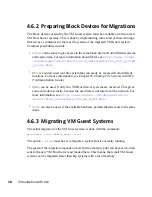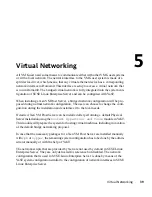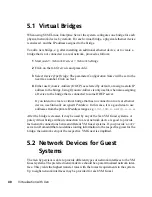
During the installation, add the Add-On product to the installation by entering the device
path. Commonly, this path looks like
hd:///?device=/dev/xvd<letter>
. In
the special example with “xvdc” as Add-On product, this would look like:
hd:///?device=/dev/xvdc
3.4 Using the Command Line to
Create Virtual Machines
From the command line, you can enter
vm-install
to run a text version of the Create
Virtual Machine Wizard. The text version of the wizard is helpful in environments
without a graphical user interface. This command defaults to using a graphical user
interface if available and if no options were given on the command line.
For information on scripting a virtual machine installation, see the man pages of
vm-install
and
vm-install-jobs
.
3.5 Deleting Virtual Machines
When you use Virtual Machine Manager or the
xm
command to delete a virtual machine,
it no longer appears as a virtual machine, but its initial startup file and virtual disks are
not automatically deleted.
To delete all components of a virtual machine configured with a file-backed virtual
disk, you must manually delete its virtual disk image file (
/var/lib/xen/images/
)
and its initial startup file (
/etc/xen/vm
).
3.6 Using an Existing SUSE Linux
Enterprise Server Virtual Machine
In SUSE Linux Enterprise Server 10 SP1 and later, the device naming is different than
the device naming of SUSE Linux Enterprise Server 10. Therefore, a SUSE Linux En-
terprise Server 10 VM Guest will not be able to find its root file system when running
on a SUSE Linux Enterprise Server 11 VM Host Server.
Setting Up Virtual Machines
25

